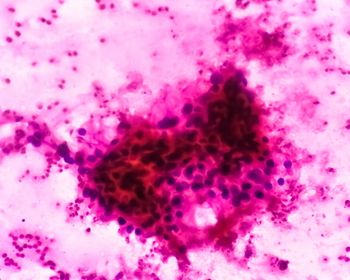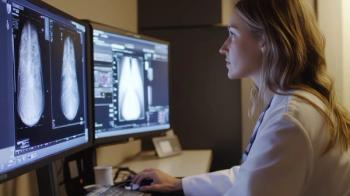
Digital archives transform role of radiologists
Clearly, hospitals need to manage data efficiently, whether it comes from a PACS, a RIS, an electronic patient record, a laboratory system, or any other clinical information system.
Clearly, hospitals need to manage data efficiently, whether it comes from a PACS, a RIS, an electronic patient record, a laboratory system, or any other clinical information system. PACS is just a part of the information puzzle. Images now belong to a wider health space that is patient-centric but not necessarily data-centric. Is this the end of PACS as we know it?
The evolution of digital systems is also changing the role of the radiologist and the imaging department. The imaging department used to "own" the image archives, particularly special processing tools like 3D rendering. As archives have become more generic and clinicians can access the processing functionality without the radiologist or radiographer, the role of the radiologist is changing from a necessary gatekeeper to a highly appreciated consultant reachable on demand by clinicians via a network. These new developments also provide radiologists with all patient data-not just images-making the diagnostic procedure more transparent and of better quality.
Data from different information systems have traditionally been archived and managed separately. This approach is very expensive and difficult to manage, given the different IT platforms, operating systems, backups, and service and maintenance contracts.
It is not surprising, then, that a trend is emerging in healthcare IT markets seeking consolidation of patient data in a common archiving solution. We can see this in regional and national eHealth programs in Scotland, Sweden, Finland, Denmark, the Netherlands, and Canada, for example. Traditional PACS archives are becoming a dying breed as customers demand the capability to store any patient data, not just radiological images.
Countries that have recently joined the European Union, such as Hungary and Poland, are in an excellent position to rethink their PACS strategies. These countries may have access to EU structural funds and are unlikely to be burdened considerably by older legacy solutions. New technological solutions are appearing all the time. Central and East European countries are well placed to take advantage of such offerings, and they may leapfrog West European countries in terms of healthcare IT in the coming years.
Dedicated next-generation storage companies such as NDMA and Bycast are entering this field, joining global IT players IBM, HP, EMC, and Kodak. Traditional PACS vendors need to either develop alternative solutions to meet customer requirements or partner with the companies occupying this new market space.
Emerging storage solutions are "intelligent." They consist of two data layers: actual physical data and metadata (indexes). These layers are used together to describe the patient document. Each time any data are stored, the metadata are registered as well.
Metadata can also be "learned," or extracted from existing archives. This means that the contents of old archives can be used fully without necessarily transferring all the physical data, just the indexes. This issue will be key in many national and regional projects.
The new storage solutions often use Grid technology, which enables real-time disaster recovery. Different Grid nodes are used in parallel to achieve the desired redundancy. In addition to this improved resilience, it may be possible to achieve cost savings of up to 70% in a Grid-based setting.
Next-generation solutions can store any kind of data, but what about retrieving it? This field is changing as well. Dedicated viewing solutions for radiological images will be replaced by multipurpose tools or portals that allow professionals to view the entire contents of a storage folder. Patient data may even be retrievable in the future by Google-type search engines.
Clinicians are likely to benefit from next-generation IT tools. PACS has, to date, been a tool for radiologists. Clinicians may have had access to images and reports, but the use of more advanced functionality such as 3D reconstruction, segmentation, and fusion imaging has been restricted to radiology personnel. This may change with streaming technology, in which only portions of data (the frame-buffer views) are transferred to the viewer. The processing itself is performed on the server or in the Grid. Streaming should make all patient data and analysis functions available to healthcare professionals enterprise-wide, even if they are using low-bandwidth networks and mobile or wireless devices.
DR. POHJONEN is a healthcare IT consultant with Rosalieco Oy in Espoo, Finland. Prof. Hans Blickman, chair of radiology at UMC St Radboud in the Netherlands, contributed to this column.
Newsletter
Stay at the forefront of radiology with the Diagnostic Imaging newsletter, delivering the latest news, clinical insights, and imaging advancements for today’s radiologists.


























